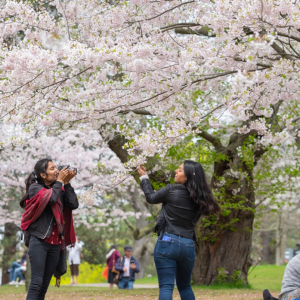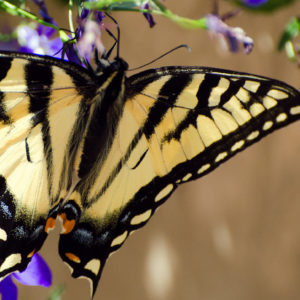Ways to introduce more birds, bees & butterflies into your garden
From bees to butterflies to birds, pollinators are an important part of our ecosystem. They provide billions of dollars worth of produce and agriculture to the Canadian economy, and help maintain healthy ecosystems and plant diversity. Unfortunately, many important pollinators, such as bees, are in decline mainly due to habitat loss and destruction, pesticide use, disease and infection, and climate change.
Here are just a few ideas of how you can create a pollinator-friendly garden this summer to encourage pollinator diversity and abundance!
Include Flowering and Native Plants in your garden
Include a diversity of different flowering plants in your garden to maximize the visitation of a variety of pollinators. For example, milkweed is crucially important for the Monarch butterfly. There are many different species of milkweed that you can plant in your garden, such as the common milkweed (Asclepias syriaca) or the butterfly milkweed (Asclepias tuberosa). On top of these plants, consider planting a variety of native nectar flowers, since Monarchs, as well as other pollinators, require nectar as a food source.
Think about providing nectar throughout many seasons! A good idea for your pollinator garden would be to have a variety of flowering plants that flower at different times of the year, therefore providing nectar throughout the season! Some pollinator friendly plants include lilacs (Syringa vulgaris), red clovers (Trifolium pratense), and Phlox species, as well as fruit and vegetable plants. Growing these plants in groups of three to five help attract pollinators to your garden.
Become a host for bees with a bee hotel
If garden space is an issue, consider building a “bee hotel”. This will hopefully attract wild bees to your home, as well as ladybugs and wasps. These hotels, or nests, provide a safe nesting site for pollinators. Combining these with flowering plants increases your chances of having pollinators visit your garden! Read this to find out exactly what you need to do!
Consider the environment
When creating your garden, some key things to consider would be do these pollinators have a place to rest? Water sources are an excellent feature you can add to your garden to accommodate wildlife. Ponds or small streams are excellent for small invertebrates. As well as bird baths can provide adequate water for birds and insects. Butterflies like to bask in the sun, so consider laying out a few rocks and stones where the butterflies and perch.
Build a bird feeder
And while you’re at it, consider building a bird feeder to attract birds to your garden! Make sure to place the feeders near trees and shrubs in order to provide shelter for the birds. To maximize the diversity of birds, put out a variety of feeders and food. For example, finches prefer hanging feeders with individual perches and prefer sunflower seeds. These seeds also attract cardinals, juncos, chickadees, and nuthatches! Suet is another great option since it is high in energy and fat, and therefore favoured in the winter months. If you want to attract hummingbirds to your backyard, you’ll need to make a nectar solution and get a hummingbird feeder.
The most important take away message is that pollinators are incredibly important to our ecosystem. Without them, most of the food we eat would not exist. It is therefore vital that we do everything in our power to protect these creatures and help their diversity and populations grow and flourish!



